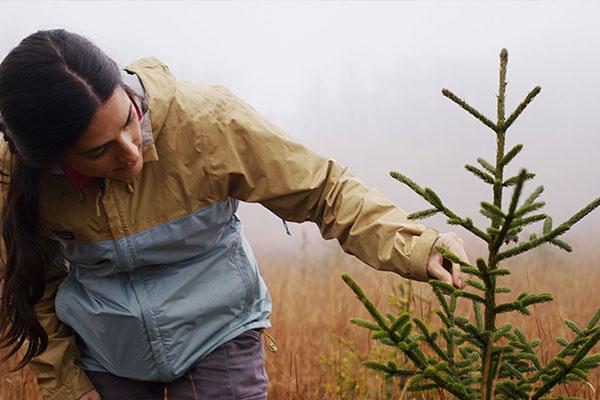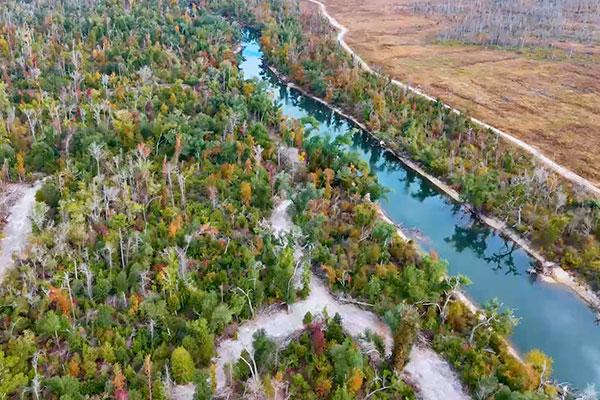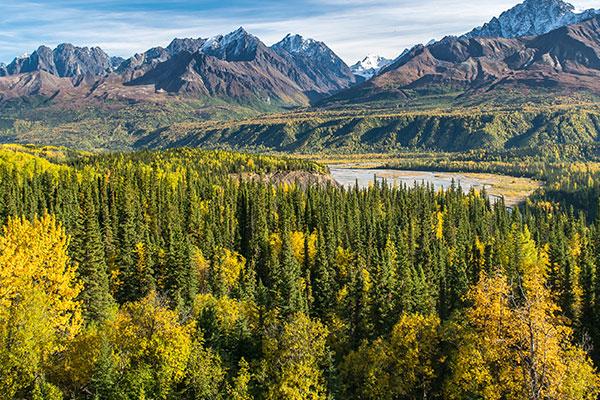
Finding Allies in Unexpected Places
A unique partnership helps homeowners plant free trees in their yards and lower their energy bills.
Learn how trees can make a positive impact on rising temperatures.

A unique partnership helps homeowners plant free trees in their yards and lower their energy bills.
Learn how trees can make a positive impact on rising temperatures.

In Grand Rapids, the focus is on engaging neighborhoods and planting trees where they are needed most.
These are moments that matter. Connections that will last a lifetime.

In the summertime, trees have strategies for managing the heat. But with temps on the rise, you can get involved to keep your trees healthy all season long.
What can you do to ensure your trees stay healthy all summer long?

A surprisingly long list of trees have fire-resistant traits. Which trees are they, and what makes them more resilient?
Specific characteristics set some trees up to better survive the flames.

An innovative tool developed by the Arbor Day Foundation predicts how climate change will shift plant hardiness zones through the end of the century.
Climate change spurs shifts in plant hardiness zones.

Tomorrow will be shaped by how we care for the planet today. That’s why we connect the world’s largest network of tree planters to act on global challenges.
See how we work with our network of tree planters to take on global challenges.

Climate change is making an already dry climate even drier. In the American Pacific West, natural disasters are intensifying and causing more severe damage. Plants and animals incapable of withstanding the now-higher temperatures are being chased out of their homes. The domino effect could make a major impact on humans if we don’t act now.
A climatologist discusses resiliency in America's driest region.

Private forestland in the American Southeast is often handed down for generations. Meet four landowners who are holding onto their forests despite increasing pressure to sell.
Meet the forest owners who treat their land like a family member.

Forests in the American Southeast are critical for ecosystem restoration. Read how the foundation is collaborating with multi-generational landowners to reforest native tree species and support a wealth of wildlife.
We’re restoring a critical ecosystem with the help of private forest owners.

In the city of Bridgeport, civic engagement and community pride empower residents to revitalize its streets with tree plantings that benefit the most vulnerable residents.
A community comes together to turn a planting opportunity into action.

This beloved symbol of the American Southeast is making a comeback in the landscape. But why are people so passionate about it?
This tree is a symbol of the American Southeast. It’s easy to see why.

As a ‘keystone species,’ the survival of the gopher tortoise means the survival of hundreds of other animals in the Longleaf Pine ecosystem. Learn how conservationists are working to protect this critical creature and the habitat it calls home.
The gopher tortoise takes its role as a ‘keystone species’ seriously.

Longleaf pine forests are wild and wonderful places, with an wide array of animals thriving among the trees. Meet just a few of the creatures who call these forests home.
Meet just a few of the many animals who call the longleaf pine forest home.

The Mississippi Alluvial Valley is a destination for migratory birds, playing host to an estimated 40% of North America’s waterfowl and 60% of all bird species. The bottomland hardwood forests in this area are key to ensuring these birds can thrive.
This migratory hotspot offers forest habitat the birds need to thrive.

On a calm, quiet morning, you’ll hear it. The call of the southern yellow-cheeked crested gibbon. It’s an enchanting sound that echoes across the forest — often heard as a duet with its mate. Unlike most primates, this gibbon adds an undulating, almost whale-like sound to the melody of the forest. And this call is what lures visitors out to Cambodia’s Keo Seima Wildlife Sanctuary at sunrise, just for the privilege of hearing it.
Protecting Cambodia’s forests is crucial in ensuring the future of its wildlife.

Alpha Kappa Alpha sorority works to plant more than 12,000 trees in four years.
See how this nationwide organization is coming together to plant more than 12,000 trees for the benefit of everyone.

In Hawai’i, food insecurity is a complex issue — one that impacts nearly half of all households on the islands. Read how fruit trees can play a role in taking on aspects of this issue in both practical and social ways.
Learn how fruit trees can take on food insecurity in more ways than one.

Climate change is redefining what summer feels like. But there’s a simple nature-based solution for taking some of the heat off communities.
Learn how trees stand ready to combat extreme heat in cities.

Trees do so much for every neighborhood. Beyond making streets more vibrant and creating places for neighbors to connect, trees are an important public health tool, offering many physical and mental benefits in any community they’re planted.
See how planting trees in neighborhoods lifts entire communities.

Hurricanes aren’t becoming more frequent, but they are getting worse. Trees can help slow the forces making storms more intense, and help communities heal after disaster strikes.
Discover all the ways trees can protect, help, and heal.

Gus Boston thought the Carr Fire would define his firefighting career. Then the Camp Fire started. Read this California firefighter’s thoughts on the impact increasingly severe fires are having on the American West.
Read a firefighters thoughts on facing California's increasingly severe fires.

Salmon are inseparable from the culture of Native American tribes of the Pacific Northwest. But they're up against critical challenges impacting both tribal lands and the climate as a whole. Find out how trees play a role in lessening some of these obstacles to their survival.
See how trees can help lessen some barriers to the survival of salmon.

How can trees help critically endangered southern resident orcas? In more ways than one. Find out how trees protect and support the delicate ecological web these mammals depend on for their survival.
Explore how trees are at the core of endangered orcas' fight for survival.

The Northern spotted owl can tell us a lot about the health of old-growth forests. But these birds are facing more challenges today than ever before. Find out how protecting delicate ecosystems is paramount for this creature’s survival.
Find out what the Northern spotted owl can tell researchers.

The forests of southern Oregon are prime real estate for the bald eagle. And while their numbers have rebounded in the last 50 years, their future survival depends on preserving and reestablishing the ecosystems they call home. Find out how trees help them thrive in a multitude of ways.
Find out how the bald eagle's survival is inseparable from the health of forests.

In 1988, Yellowstone National Park was engulfed in flames. By the time the blaze was extinguished, nearly a third of its land was scorched. Explore how the work of replanting after this fire laid the foundation for national and international recovery efforts.
Learn how a historic Yellowstone fire informed forest recovery efforts around the world.

Globally, wildfires are burning twice the amount of forests they did 20 years ago. Find out why fires today are raging with more intensity and what must be done to give our forests a fighting chance.
See what must be done to give forests a fighting chance.

Climate change is already here. Learn how the Arbor Day Foundation is working with communities and using science to plant trees with intention where they'll have the biggest impact on our changing planet.
Explore our work at the intersection of science and communities.

Planting more than 500 million trees has been no small feat. But in a world that needs trees now more than ever, we're not stopping there. See how our mission continues to take root in the form of our next monumental goal.
See how our mission continues to take root.

No matter where it’s planted, every tree means something. But how do you accurately keep track of hundreds of millions of trees planted across more than 50 years? See our approach to calculating our impact.
See our approach to calculating our impact.

More and more, the correlation is clear: spending time in nature is good for your physical and emotional wellbeing. Find out how, beyond being seen as just a perk, green spaces are being recognized as a fundamental driver of positive health outcomes.
Learn how trees help us keep our cool in more ways than one.

The endangered ocelot makes its home in a range of environments, from the dense rain forests of Central and South America to arid thornscrub forests of Mexico and Texas. See how these animals urgently need trees to ensure their survival in the face of rampant deforestation.
Find out how these big cats' survival is tied to deforestation.

In a careful balance of science being led by nature, this high-tech nursery employs cutting edge techniques to grow upwards of 3 million seedlings each year. See how these young trees help National Forests across the American West recover more quickly from natural disasters.
Explore a nursery where science is helping grow millions of trees every year.

As a backbone of our ecosystems, the story of trees is inseparable from the story of biodiversity on this planet. With unprecedented biodiversity loss, it’s not enough just to plant trees — learn how we use science to plant them where they’ll have the biggest impact.
Learn how science helps us safeguard biodiversity through trees.

Trees are part of the solutions to major challenges that span borders. That’s why our global network of planting partners are crucial. Find out how we work with local leaders to plant trees where they'll have the greatest impact for the planet.
See how local leaders are on the front lines of planting around the world.

Planting trees at a massive scale is one of our best tools in the fight against climate change. But how can we plant millions of trees the right way? Learn how we've spent more than 50 years honing our process and building a network of on-the-ground partners leading the charge.
Learn how our partners bring forests to life.

Tracking the growth of trees for forestry carbon credits on small farms in Nicaragua used to be painstaking and expensive. Read about how now, all farmers need is a smartphone to benefit from the trees growing on their land.
Explore how technology is helping small farmers.

Hurricane Maria tore through Puerto Rico in 2017 and took nearly 30% of the island’s trees with it. Explore how we're working with local partners to plant the right trees with sensitivity and scale.
See our mission come to life with local partners.

Forests play a role in filtering a whopping 75% of the world’s freshwater. But as trees are lost to wildfires and other natural disasters, learn how protecting vulnerable watersheds through the unique power of trees is more important than ever.
Find out how trees protect these vulnerable areas.

The Creekside Community in Greer, South Carolina welcomed its first residents in 2008. See how this community came together to root themselves in a sense of home.
Explore how a community came together to root themselves.

As temperatures rise, historically underserved communities are feeling the heat. Explore how communities like Parkwood in Nashville are using trees as a strategy to combat urban heat islands to cool an area otherwise lacking community canopy.
Learn how neighborhood trees can make life better for residents.

Trees can be a force for good in a neighborhood. And behind those trees are people tirelessly championing their communities. Meet some local heroes working to make their neighborhoods a better place for everyone who calls them home.
Meet local leaders championing change through trees.

Meet Constantino Aucca, a UN Champions of the Earth award winner for his conservation efforts of South America’s rare Polylepis forests. With roots in his Inca heritage and local communities, learn how his work is a force for good in the Andes region for today and tomorrow.
This man is on a mission to plant trees and revive a centuries-old philosophy in the Andes Mountains.

Trees are a powerful way to make neighborhoods and cities more liveable places. But not everyone has equal access to trees. See how using trees as a tool in environmental justice work takes a combination of local knowledge, community preferences, and science.
See how trees can be a tool in environmental justice work.

The benefits of trees is a story that can be told in part through numbers. See how having a better understanding of the data helps us identify neighborhoods that will benefit most from trees so we can focus our efforts on areas of greatest need.
Learn how data helps paint a picture of where trees are needed most.

With Impact Dashboard, our planting partners can see their efforts in one place with metrics, insights, and stories of projects and their effect on the world. Learn how this technology brings meaning to the numbers and the impact of every project to life.
Find out how we show the story of planting projects through the numbers.

We have an ambitious goal to plant 500 million trees in the next five years with a focus on areas of greatest need. But how do we identify regions where planting will have the most impact? Learn how we use data to drive our focus.
Learn how we use data to drive our focus.

The world needs trees now more than ever. Find out how the Arbor Day Foundation is taking action with the goal of planting 500 million trees with a focus on areas of greatest need by 2027.
Find out how we're planting 500 million trees with focus and intention.

How do we plant in neighborhoods that need them most? We work with neighborhood leaders to help us understand what their area needs most and zero in with block-by-block data. See how relationships and science are bringing our mission to life.
See how people and science are bringing our mission to life.

One of the things that makes Boise special is its deep connection to nature and commitment to sustainability. Find out how we partnered with the community to help make The City of Trees a greener, more resilient place to live.
Find out how we partnered with Boise to help make the city a greener place to live.

Madagascar is home to one of the most remarkable ecosystems on the planet. Learn about our work with local residents who are growing and planting trees to combat deforestation.
See our work in action with those safeguarding Madagascar's future.

Each year, millions of monarch butterflies travel thousands of miles to oyamel forests in Mexico. However, these critical ecosystems are on the decline. With the monarch butterfly now listed as an endangered species, learn why restoring their winter home in these forests is critical to their survival.
Explore reforestation work critical to the monarch butterfly's survival.

West Virginia's Monongahela National Forest is one of the most ecologically diverse areas in the country. But its history of mining left large swaths of land in need of healing. Learn how a massive planting effort is using native trees to restore the glory of this forest for generations to come.
Learn how massive planting efforts of native trees are helping a region heal.

Get an on-the-ground look into how we’re working with our partners in Nicaragua to support small family farms in planting trees on their land — slowing the effects of a changing climate while actively contributing to the local ecosystems and economies.
Watch how empowering small farmers to plant trees creates generations of good.

The neighborhood of Brownsville is home to about 17,000 people living with food insecurity and a lack of fresh produce on a daily basis. Learn how, in the face of this food desert, a community came together to grow their own.
See a community's work in action in Miami.
By subscribing, you will receive stories illustrating the power of trees, the latest news and updates, and how we can make a positive impact together.